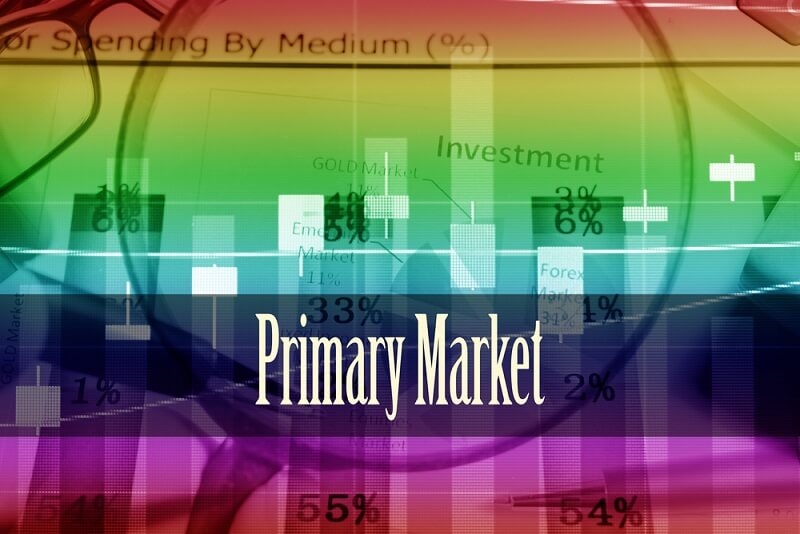
Primary vs secondary market understanding is important for whoever wants to understand the world of financial markets or investing. Whether you are a novice investor or just trying to brush up on your finance knowledge, recognizing the difference between primary and secondary markets for beginners can help lead you toward making correct choices to establish better planning for investment.
In this blog, we will explain how the primary market works, review examples of secondary markets in the U.S., and provide you with a comprehensive, yet easily understandable breakdown of how they work within the greater system of financial markets. If you've ever been confused about financial markets, you are in the right place.
Before we delve into the details about the primary and secondary markets, we should know, for starters, what they are and why financial markets even matter. Financial markets are simply places where people, firms, and institutions exchange financial instruments such as stocks, bonds, commodities, and currencies.
Financial markets are an indispensable part of the world economy. They provide businesses access to capital, help governments in the formulation of monetary policy, and allow investors to create wealth.
The primary market is where new securities are created and sold for the first time to investors. It is the market where businesses "raise capital" by issuing new issues of stocks or bonds. The process is arranged in most instances by an Initial Public Offering (IPO) or some other underwriting process.
The following features are common to the primary market:

Let's dissect how the primary market functions with an easy example:
A technology startup company, XYZ Inc., goes public. It works together with an investment bank to underwrite and sell 10 million shares at $10 each in an IPO. Investors buy these shares directly from XYZ Inc., and the firm gets the money raised (in this example, $100 million). These new shares can be traded on the secondary market.
This is a key part of the financial system and is essential for enabling firms to expand.
The moment the primary sale is finalized in the primary market, issued securities are transferred to the secondary market. Here, investors exchange securities between themselves. The issuing firm does not get any funds from such transactions.
When considering examples of secondary markets in America, the initial names that come to mind are:
These platforms offer liquidity and transparency, making it easy for investors to sell or buy outstanding securities.
The secondary market sees to it that investors have confidence when they buy or sell securities. It plays an important role in establishing the market price of a firm's shares and ensures sustained interest from investors in capital markets.
Knowledge of the primary vs secondary market comparison enables you to understand where your investments are coming from and where they get traded afterwards. This is a detailed explanation of how they are different:
The primary market is where companies issue new securities in order to raise funds. Securities are purchased directly between the issuer and original investors. The price that investors are willing to pay is determined by the issuer and the underwriter. When the underwriting is complete, all capital raised goes directly to the issuing company. The primary market is represented well by IPOs, FPOs, bond issues, etc.
The secondary market is where previously issued securities get traded among investors. Prices in the secondary market are determined by market forces - the issuer is not involved in any of these transactions, and proceeds from sold securities go to the investor selling the security. The major exchanges include the New York Stock Exchange, NASDAQ, and Over-the-Counter (or OTC) quotes.
This is the difference that is at the core of understanding financial markets made simple.
For beginners, it can seem confusing at first to tell the difference between primary and secondary markets. But here's a simple way to think about it:
Knowing this distinction better enables you to learn where and when to invest. Newbies are usually cautioned to watch how these markets work before getting in with real money.
Both markets together enable the overall financial ecosystem and provide investors with multiple means to increase their wealth.
Both markets have risks, although they present opportunities:
Learning the structure of financial markets explains allows you to tackle these risks in an effective manner.
Facebook IPO (2012): Raised $16 billion in one of the largest-ever IPOs.
Investors who purchased shares in the IPO were directly involved in the primary market.
Daily Trading on NASDAQ or NYSE: Investors selling or buying Apple or Tesla stock are involved in the secondary market.
These secondary market examples in the U.S. point to the way these markets are daily utilized by millions of investors.
Both markets have distinct purposes and attract participants depending on their investment objective.
Understanding how the primary market operates and how to access the secondary market is critical to long-term success as an investor.
The concept of primary vs secondary market: what's the real difference? is one that all investors need to understand. Both of these markets cooperate to enable capital to move smoothly throughout the economy and provide special opportunities for both firms and shareholders.
From IPOs to day trading, every transaction plays a role in the dynamic world of financial markets explained. If you’re a beginner, take time to understand the difference between primary and secondary markets for beginners, assess your risk tolerance, and start exploring both markets with confidence.
This content was created by AI